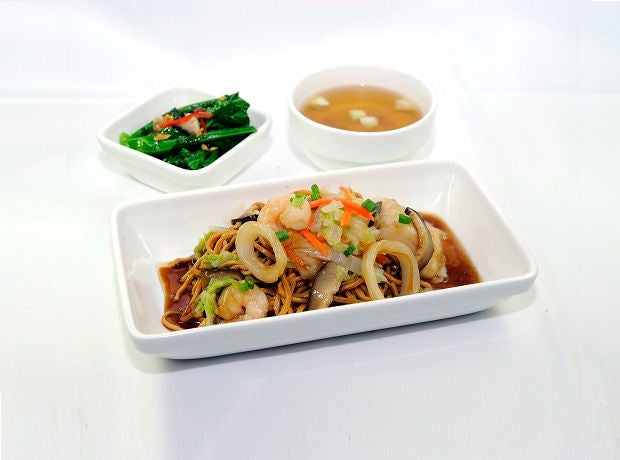
Often perceived as bland and unappetising, this stereotype of hospital food is far from the truth. Today, comfort food and popular hawker fare are among the 1,000 dishes on Sengkang General Hospital’s (SKH) menu, which is rotated fortnightly.
There are even plans to further expand the variety and give long-stay patients more choices. A new menu that includes double-boiled soups, laksa and rendang burger is slated for launch in the first quarter of this year.
The SKH Food Services team behind this delectable array of meals comprises nurses, dietitians and speech therapists, all of whom work closely with food service provider SATS to create nutritious and tasty meals. They span eight different types — Chinese, Chinese vegetarian, Malay, Indian, Indian vegetarian, western, chef’s specials, and light meal options.

Healthy comfort food
Aside from variety, careful curation and consideration go into preparing each meal too.
The right type of diet texture — regular, soft, chopped, minced, or pureed — ensures that patients with different medical conditions, especially those with swallowing difficulties, can enjoy the food safely. This reduces the risk of aspiration pneumonia, a lung infection resulting from food or liquids that enter the lungs.
“Patients with reduced chewing abilities may require food pieces that are smaller and softer, while patients with more severe deficits in the oral cavity and throat may require a pureed diet,” said Ms Chriselle Koh, speech therapist, SKH.
Dietitians also work alongside speech therapists to ensure that patients on texture-modified diets still receive adequate nutrition to aid recovery.
“We provide recommendations on the proportions of macronutrients, such as carbohydrates, protein and fat, so that the calorie content of each meal is adequate and balanced, which is essential for improving recovery and physical function. Patients also receive a serving of fruits and vegetables for lunch and dinner so that they get the vitamins, minerals, and dietary fibre that play key roles in boosting immunity and chronic disease management,” said Ms Lee Hui Bing, dietitian, SKH.

Mr Matthew Yim, Executive Chef, SATS Food Services said, “We are passionate about contributing our culinary expertise to promote wellness in our community. By customising holistic food solutions to suit patients’ palates, we support the needs of healthcare institutions. Menus are designed to combine the art of cooking with nutritional science. Every dish needs to be tasty and appetising, while healthy and nutritious at the same time.”
In many cases, a healthier version of popular dishes is specially created. For SKH’s healthier hawker fare series, Hokkien mee is prepared with less oil and a carefully calibrated 7:3 ratio of yellow noodles and thick beehoon. The latter contains fewer calories and lower amounts of fat and sodium, compared to yellow noodles.

The authenticity and flavour of each dish are maintained as much as possible, even with the use of substitute ingredients such as low-fat milk and soybean oil, to ensure a delicious, nutritious and healthy meal for patients.
Meals are freshly prepared in SKH’s kitchen daily and culinary techniques, such as steaming, baking and stir-frying, are also adopted to retain more nutrients in the food.
“The chefs are continuously innovating and exploring new flavour profiles with bold seasoning using natural herbs and spices, along with complementary garnishes and condiments to elevate the meal presentation. They are meticulous in plating and presenting each dish, ensuring the safe handling of food, while maintaining visual appeal,” said Mr Yim.

Tailored for patients
Although prepared in large batches, each meal has to meet stringent hospital guidelines, food safety regulations, and nutritional requirements. It also has to eliminate common allergens and take into account the needs of different health conditions.
The SKH Food Services team has created 37 different types of therapeutic diets tailored to the dietary and nutritional needs of patients suffering from various ailments, such as gout, diabetes, renal failure, and congestive cardiac failure. For instance, chicken korma, a traditional Indian curry dish, has a creamy, flavourful taste even without the use of dairy ingredients, making it suitable for renal patients.
“A patient with kidney disease who is on dialysis may require stricter control on dietary sodium, potassium and phosphorus, while patients who have undergone surgery may require more calorie and protein. We will advise the Food Services team on choosing suitable ingredients for use in the meal preparation so that hospital diets can complement their treatments,” said Ms Clarissa Tang, dietitian, SKH.
This requires extensive planning, and menu designing involves many rounds of consultation and fine-tuning.
Ms Chia and her team found that many patients were pleasantly surprised that they were able to choose their meals from such a wide range of choices. On average, more than 70 per cent of patients rated that the food tasted excellent.
“Patients may lose their appetite as a result of their medical conditions. It is all about refining the menu to provide a selection of flavours, textures, and meals that appeal to their taste buds to encourage a speedy recovery and enhance the overall experience during their hospital stay,” said Mr Yim.













 Get it on Google Play
Get it on Google Play